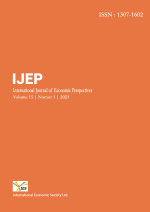Economics of rubber industry in Kerala: An analytical study of indigenous rubber and import of rubber
Keywords:
economic slump, global economic scenario, import of rubber, indigenous rubber, rural industrializationAbstract
The present research paper is an attempt to examine the need to import rubber and the difference between indigenous rubber and the import of the rubber industry in Kerala. The study of indigenous rubber and the import of rubber is very important and significant for the Rubber industry in Kerala in the context of growing rubber imports from other countries to India. In the present study, 54 respondents opined that the import of rubber has a positive impact on our economy and they supported it whereas 179 respondents opined that the import of rubber harms our economy and they reject it. Therefore, it can be clearly stated that the import of rubber will negatively affect the economy. Comparison between indigenous rubber and import of rubber showed the fact that the effect is moderate for all sub-variables namely offering products at a lower price, providing superior quality products, providing regulating price mechanism in the market, providing goods well packed at lower cost, launching a different variety of products which suits the convenience of the people, coaxing other dealers to bring down the prices by reducing prices, preventing black marketing and hoarding, price reduction in fast-moving items, providing after-sales services. There is no difference in the comparison of the indigenous rubber and import of the rubber industry in Kerala. To be more specific, the import of rubber has no specific advantage over indigenous rubber in the Rubber industry in Kerala.
References
Berger, T. (2019). Railroads and rural industrialization: Evidence from a historical policy experiment. Explorations in Economic History, 74, 101277. https://doi.org/10.1016/j.eeh.2019.06.002
Chadha, G. K., & Sahu, P. P. (2002). Post-reform setbacks in rural employment: issues that need further scrutiny. Economic and Political Weekly, 1998-2026.
Chamberlin, E. H. (1949). Theory of monopolistic competition: A re-orientation of the theory of value. Oxford University Press, London.
Chan, F. K. W. (1962). A preliminary study of the supply response of Malayan rubber estates between 1948 and 1959. Malayan Economic Review, 7(2), 77-94.
Chengappa, P. G. (2004). Emerging trends in agro-processing in India. Indian Journal of Agricultural Economics, 59(902-2016-68029).
George K, T., & Joseph, T. (1992). Rubber-based industrialisation in Kerala: An assessment of missed linkages. Economic and Political Weekly, 47-56.
Hall, R. E. (2016). Macroeconomics of persistent slumps. In Handbook of Macroeconomics (Vol. 2, pp. 2131-2181). Elsevier. https://doi.org/10.1016/bs.hesmac.2016.03.010
Kannan, M. (2013). The determinants of production and export of natural rubber in India. IOSR Journal of Economics and Finance, 1(5), 41-45.
Kornochalert, N., Kantachote, D., Chaiprapat, S., & Techkarnjanaruk, S. (2014). Bioaugmentation of latex rubber sheet wastewater treatment with stimulated indigenous purple nonsulfur bacteria by fermented pineapple extract. Electronic Journal of Biotechnology, 17(4), 174-182. https://doi.org/10.1016/j.ejbt.2014.06.003
Mukherjee, A., & Zhang, X. (2007). Rural industrialization in China and India: role of policies and institutions. World Development, 35(10), 1621-1634. https://doi.org/10.1016/j.worlddev.2006.11.008
Mukhopadhyay, A. (2016). SEM study of worn surface morphology of an indigenous ‘EPDM’rubber. Polymer Testing, 52, 167-173. https://doi.org/10.1016/j.polymertesting.2016.04.013
Parry, M. L., Rosenzweig, C., Iglesias, A., Livermore, M., & Fischer, G. (2004). Effects of climate change on global food production under SRES emissions and socio-economic scenarios. Global environmental change, 14(1), 53-67. https://doi.org/10.1016/j.gloenvcha.2003.10.008
Schandl, H., Hatfield-Dodds, S., Wiedmann, T., Geschke, A., Cai, Y., West, J., ... & Owen, A. (2016). Decoupling global environmental pressure and economic growth: scenarios for energy use, materials use and carbon emissions. Journal of cleaner production, 132, 45-56. https://doi.org/10.1016/j.jclepro.2015.06.100
Schoen, R. F. (2019). Women and rural industrialization: Garment production reaches old land and new labor in Bangladesh. In Women's Studies International Forum (Vol. 75, p. 102248). Pergamon. https://doi.org/10.1016/j.wsif.2019.102248
Setiawan, H. (2012). Technology Innovation Roadmap To Industrial Development of Rubber-Raw Material In South Sumatera (Ergonomics SHIP Approach & Appropriate Technology Point of View). Procedia Economics and Finance, 4, 255-263. https://doi.org/10.1016/S2212-5671(12)00340-1
Signes, C. H., Garzón-Roca, J., Fernández, P. M., de la Torre, M. E. G., & Franco, R. I. (2016). Swelling potential reduction of Spanish argillaceous marlstone Facies Tap soil through the addition of crumb rubber particles from scrap tyres. Applied Clay Science, 132, 768-773. https://doi.org/10.1016/j.clay.2016.07.027
Stern, R. M. (1965). Malayan Rubber Production, Inventory Holdings, and the Elasticity of Export Supply. Southern Economic Journal, 314-323.
Tan, C. S. (1984). World Rubber Market Structure And Stabilisation: An Econometric Study.
Published
How to Cite
Issue
Section
Copyright (c) 2021 Adarsh Adarsh, Sudheer Sudheer

This work is licensed under a Creative Commons Attribution 4.0 International License.
Allows users to: distribute and copy the article; create extracts, abstracts, and other revised versions, adaptations or derivative works of or from an article (such as a translation); include in a collective work (such as an anthology); and text or data mine the article. These uses are permitted even for commercial purposes, provided the user: gives appropriate credit to the author(s) (with a link to the formal publication through the relevant URL ID); includes a link to the license; indicates if changes were made; and does not represent the author(s) as endorsing the adaptation of the article or modify the article in such a way as to damage the authors' honor or reputation. CC BY







